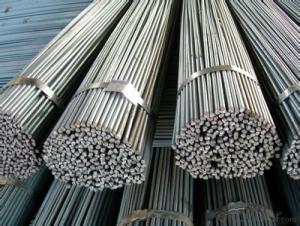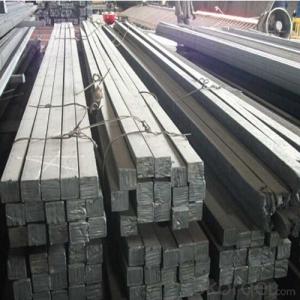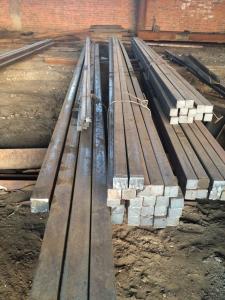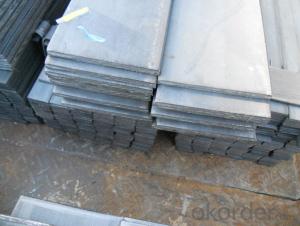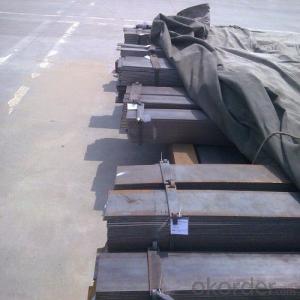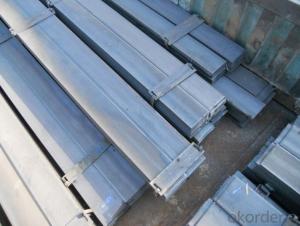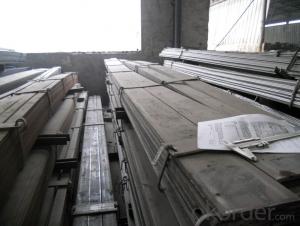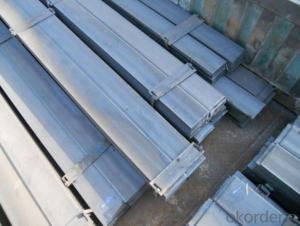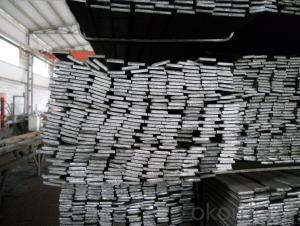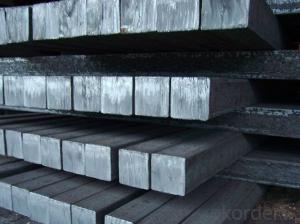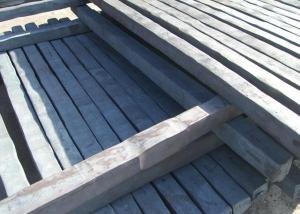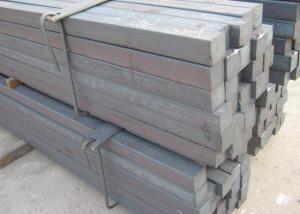Hot Rolled Round Steel Bars Q235
- Loading Port:
- Tianjin
- Payment Terms:
- TT OR LC
- Min Order Qty:
- -
- Supply Capability:
- 200000 m.t./month
OKorder Service Pledge
OKorder Financial Service
You Might Also Like
Specifications of Hot Rolled Round Bar
1. Grade: Q235, SS400, A36, S235JR
2. Diameter: 6mm—150mm
3. Length: As customer’s request, but we usually produce 6m, 9m and 12m
4. Steel Grade: Mild carbon steel
5. Characteristics: Has a good harden ability, high hardness, wear resistance, heat distortion, etc. So it can be used in the production of heavy duty and complex shape mold.
6. Main Markets: Mid East, Southeast Asia, Africa, Oceania, Eastern Asia, Central America and South America, etc.
Usage and Applications of Hot Rolled Round Bar
1. Hot rolled round bar of 6-25mm, or small round is mostly used for straight bundles supply, and used for steel, bolts and various mechanical parts. While the bigger round bar, or more than 25mm hot rolled bar, is mainly for the manufacture of mechanical parts or for seamless steel billet.
2. Besides, we can supply some especial material steel round bar that can be used for main shaft of steamer, hummer shank, with big section and supper force.
Packaging & Delivery of Hot Rolled Round Bar
Packaging Detail: All goods are packed in bundle with steel strips and shipped by break bulk vessel or container (depend on target market and different ports)
Delivery Detail: 45 days
Trade terms: FOB, CFR, CIF
MOQ: 25 tons per specification; we can negotiate the quantity if the specification is normal or we have stock of one specification.
Weight: Theprice invoicing on theoretical weight basis or actual weight basis depends on customer’s request.
Shipment: The shipment of bulk break or container is depends on customer’s request and the situation of the port of destination.
Documents given: Full set of original clean on board bill of lading; Original signed commercial invoice; Original packing list; Policy of insurance; Certificate of origin and what the target market needs.
Production Flow of Hot Rolled Round Bar
We use advanced equipments like Electric Arc Furnace, Ladle Furnace and Vacuum Degasser to produce our products.
The common processes are preheated forging quenching, dual refinement solution process, cooling quenching and isothermal quenching. We use heat treatment for dual refinement solution process. The main measures process is high temperature solution and refinement cycle. High temperature solution can improve the carbide morphology and particle size. The aim is to make the loop refinement ultrafine austenite grains.
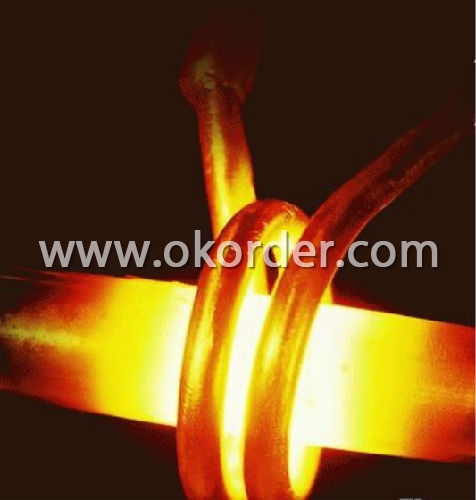
Quality Assurance of Hot Rolled Round Bar
1. We will strictly inspect our production that we sold according to the customer’s request.
2. Quality should be in conformity with the specification of the manufacturer. Quantity and packing conditions should be in conformity with the term in the contract.
3. Should the packing found damaged, the buyer has the right to claim to the seller.
- Q: Can a steel square be used for flooring installation?
- No, a steel square is not typically used for flooring installation. Flooring installation requires specialized tools and materials such as adhesive, underlayment, and flooring nails or staples. A steel square is more commonly used in carpentry for measuring and marking angles, not for the actual installation of flooring.
- Q: Can a steel square be used for checking the alignment of walls?
- Yes, a steel square can be used for checking the alignment of walls. The straight edges of the square can be placed against the walls to determine if they are perpendicular or at the desired angle. The square can also be used to check for plumbness by aligning it vertically against the walls.
- Q: How do you use a steel square to determine angles for baseboards?
- Achieving a professional-looking installation can be done by utilizing a steel square to ascertain angles for baseboards. To accomplish this, adhere to the following steps: 1. Begin by obtaining an accurate measurement of the baseboard length that necessitates an angled cut. Utilize a tape measure for precise measurements. 2. Position the steel square against the baseboard's edge, ensuring that one side aligns with the edge. 3. Securely hold the steel square in place and adjust it until the other side touches either the wall or the surface where the baseboard will be installed. 4. Once the steel square is suitably positioned, locate the angle measurement markings on the square. These markings typically indicate degrees. 5. Determine the angle measurement where the baseboard's edge intersects with the steel square. This will indicate the angle at which the baseboard should be cut. 6. Transcribe the angle measurement onto the baseboard using a pencil or marker. Remember to mark both ends of the baseboard that necessitate cutting. 7. Employ a miter saw or coping saw to cut the baseboard along the marked angle. Take your time and execute precise cuts to ensure an accurate fit. 8. After cutting, verify the angle by placing the cut baseboard against the wall or surface where it will be installed. It should fit snugly and align perfectly with the adjacent baseboards. By employing a steel square to determine baseboard angles, you can achieve meticulous and precise cuts, resulting in an installation that exudes professionalism.
- Q: Can a steel square be used for framing a wall?
- Yes, a steel square can be used for framing a wall. A steel square, also known as a framing square or a carpenter's square, is a versatile tool that can be used for a variety of framing and layout tasks in construction. It has a right-angle shape with a long blade and a shorter tongue, and is typically made of steel or aluminum. When framing a wall, a steel square can be used to ensure accurate and square corners. It can help in marking and measuring cuts for studs, rafters, and other framing members. The long blade of the square can be used to mark straight lines and check for straightness and levelness of walls and other surfaces. In addition to framing walls, a steel square can also be used for other framing tasks such as laying out roof rafters, cutting stair stringers, and checking for squareness in various construction projects. Its durable and sturdy construction makes it a reliable tool for both professional contractors and DIY enthusiasts. However, it is important to note that while a steel square is a valuable tool for framing walls, it may not be the only tool needed. Other tools such as a level, tape measure, and power tools may also be necessary for a successful framing project.
- Q: How do you use a steel square to check for levelness in a floor?
- In order to check if a floor is level using a steel square, you will need a carpenter's level and a tape measure as additional tools. Begin by making sure that the floor is clean and free from debris or obstacles to ensure accurate measurements and prevent anything from affecting the levelness of the floor. Next, select a starting point on the floor where you will begin taking measurements. It is generally recommended to start in a corner of the room or against a straight wall. Position the steel square on the floor at the starting point, making sure it is completely flush with the floor surface. If necessary, use the carpenter's level to ensure that the steel square is perfectly level. Adjust the square if needed to achieve a level position. Once the steel square is level, use the tape measure to determine the distance between the bottom of the square and the floor. Take note of this measurement. Proceed to move the steel square along the floor, keeping it level, and repeat the process of measuring the distance between the bottom of the square and the floor at regular intervals. The frequency of these measurements can vary depending on the size of the floor and your personal preference, such as every few inches or every foot. Compare the measurements you have obtained. If the distance between the bottom of the square and the floor remains consistent throughout, this indicates that the floor is level. However, if there are significant variations in the measurements, it suggests that the floor is not level and may require adjustments or repairs. By utilizing a steel square in combination with a carpenter's level and tape measure, you can effectively assess the levelness of a floor. This process is essential for various flooring projects as it ensures a flat and even surface for installation or other purposes.
- Q: How do you use a steel square to determine the height of an object?
- To use a steel square to determine the height of an object, you can follow these steps: 1. Place the steel square on a flat surface, ensuring that it is level and stable. 2. Position the object whose height you want to measure next to the steel square. 3. Align the long side of the steel square vertically against the side of the object. Make sure the square is flush against the object's surface. 4. Look at the measurement markings on the steel square. The height of the object will be indicated by the point where the top edge of the object intersects with the measurement scale on the square. 5. Take note of the measurement indicated on the steel square, which represents the height of the object. Note that if the object has an irregular shape or is not flat, you may need to adjust your positioning to find a consistent reference point to measure from. Additionally, it is important to ensure the steel square is accurately calibrated and the measurements are easy to read to obtain precise results.
- Q: How do you use a steel square to determine the length of a hypotenuse?
- To use a steel square to determine the length of a hypotenuse, you can employ the Pythagorean theorem. By placing the steel square's shorter leg along one side of the right-angled triangle and aligning the longer leg with the other side, you can measure the lengths of the two sides. By squaring these lengths, adding them together, and then taking the square root of the sum, you can find the length of the hypotenuse.
- Q: What are some common uses for a steel square in picture framing?
- Some common uses for a steel square in picture framing include measuring and marking accurate right angles, ensuring the corners of frames are square, and aligning and checking the levelness of frames before mounting.
- Q: Can a steel square be used for checking the squareness of picture hanging systems?
- Indeed, the squareness of picture hanging systems can be assessed using a steel square. Within the realms of carpentry and woodworking, a steel square serves as a frequently employed instrument to guarantee precision and squareness. Sporting a right angle structure, this tool furnishes a trustworthy point of reference for measurement and squareness assessment. By juxtaposing the steel square with the boundaries of the picture hanging system, one can ascertain whether it is suitably aligned and perpendicular to the wall.
- Q: Can a steel square be used for checking the squareness of a window opening?
- Yes, a steel square can be used for checking the squareness of a window opening.
Send your message to us
Hot Rolled Round Steel Bars Q235
- Loading Port:
- Tianjin
- Payment Terms:
- TT OR LC
- Min Order Qty:
- -
- Supply Capability:
- 200000 m.t./month
OKorder Service Pledge
OKorder Financial Service
Similar products
Hot products
Hot Searches
Related keywords
